|
Summer is a fun time, but it’s also a time of mishaps that can be avoided. Here are some ways to keep your children safe this summer. Longer days plus lighter nights equals more worrying. Yes, it's summer and before your kids race out the door, you're doing all you can to protect them from sun, bugs and head injuries. There's something about this season that makes kids run faster and play harder. And like everything else parents carefully do to protect their kids - cooking healthy kid food, hiring the right babysitters, buckling them into car seats (or shouting out seat belt reminders), summer takes preparation, too. Here's how you and your children’s’ caretakers can help keep kids safe this season - without feeling like Summer Cop, monitoring the fun right out of their vacation.
Apply early and repeat. For kids six months and older (as well as adults), sunscreens with a Sun Protection Factor (SPF) of 15 or greater reduce the intensity of UVRs that cause sunburns. Apply liberally 15 to 30 minutes before sun exposure so it can absorb into the skin and decrease the likelihood that it will be washed off. Then reapply every two hours and after kids swim, sweat, or dry off with a towel. For most users, proper application and reapplication are more important factors than using a product with a higher SPF.
Plan early morning play. For kids beyond that baby stage, it’s best to plan children's outdoor activities to avoid peak-sun hours (10 a.m. to 4 p.m.) as much as possible. Sound impossible for your active kids? Make sure you can get a break from the sun, when needed. Beware of shade. Many think sitting in the shade is a simple way out. Shade provides relief from heat but offers parents a false sense of security about UVR protection. People can still sunburn in shade, because light is scattered and reflected. A fair-skinned person sitting under a tree can burn in less than an hour. Check the weather.com Check the ultra-violet (UV) index (on a site like Weather.com) when planning outdoor activities; it predicts the intensity of UV light for the following day based on the sun's position, cloud movements, altitude, ozone data, and other factors. Higher UV index numbers predict more intense UV light during midday of the following day.
Stay off cell phones. Don't even allow yourself to get distracted when your kids are in the water. And yes, chatting with other parents is a common distraction as well. Know your skills. Adults and caregivers should refresh their Infant Child CPR certification each year, especially before summer, if there is a pool involved. Kids should never swim alone, and having adults or caregivers know water safety skills is smart. Put a guard up. Even kiddy pools in backyards should be drained after use, urges Samuel. For houses that have swimming pools, fencing should be at least four feet high and surround the pool on all sides, with doors that close and lock by themselves. Pool supply companies may offer options for alarms and other safety systems. Remember to never fully rely on an alarm or a fence. You must also train your kids to never go near the pool without an adult. Educate yourself. The Consumer Product Safety Commission has a pool safety website where families can find out how to keep kids safer at any pool - whether it's the community park or your child's camp. Beware of Bugs. Unfortunately, those blood-sucking critters are a part of summer nights, and, yes, even days. Spray and repeat. Parents or caregivers should spray kids' exposed skin and clothing. Reapply whenever the spray gets washed off or the child starts getting bitten again. For an alternative to sprays, try insect repellent pads that clip on clothes. Check for allergic reactions. Some kids react to insect bites more than others. If your child gets bitten and seems to have an allergic reaction to the bite, seek medical attention to see if you should give your child an oral antihistamine or other medication. Beware of serious bug-borne illnesses. Most people who contract Eastern Equine Encephalitis ("Triple E"), a mosquito-transmitted illness, do not show any symptoms. But here's the good news: this illness occurs relatively infrequently and mostly in and around swampy areas where human populations tend to be limited. West Nile is another virus you'll hear about when the heat strikes. Basically, if there are symptoms of either of these illnesses, they are flu-like, so if you hear of instances in your area, and your child has bites and flu-symptoms (and muscle-stiffness for West Nile), go to a doctor. It's better to be safe.
Kids six and older can check themselves, with adult guidance, but they must check lots of areas, not just forearms and legs: under the arms, in and around the ears, inside the belly button, back of the knees, in and around the hair, between the legs, and around the waist. If a child develops any rash or fever after a tick bite, it's time to visit the doctor.
The Safe Kids Coalition urges parents and caregivers to watch for warning signs such as thirst, dry or sticky mouth, headache, muscle cramping, irritability, extreme fatigue, weakness, dizziness, or decreased performance. Head Off Injuries. Here are some reminders about helmet safety. Kids should wear a properly fitting helmet that is approved by the CPSC for the activity they are doing (biking, skateboarding, etc) every single time. Why not take your child with you to pick it out at the shop, so he can have a say in the color and design? And, it may sound silly, but don't forget to fasten the chinstrap. Make a family rule: no helmet, no wheels. And parents and caregivers, you must serve as an example: wear your own helmet!
Worth Schlepping: A Summer Survival Kit Here’s some smart stuff a parent or caregiver can carry around in a purse, bag or car for summer emergencies: * Cell phone * Water * Medications for chronic conditions * Bandages * Antibiotic cream for cuts and scrapes, * Crushable icepack for bruises, * Benadryl * An epi-pen for a person with known allergies * Sun protection * Hats and sunglasses * Insect repellent * Tweezers Let's not forget our sanity with all these safety measures to take and remember. With all this stuff to worry about, carry around and do to have a safe and enjoyable summer, it may not be long before we are wishing for winter! |
|
|



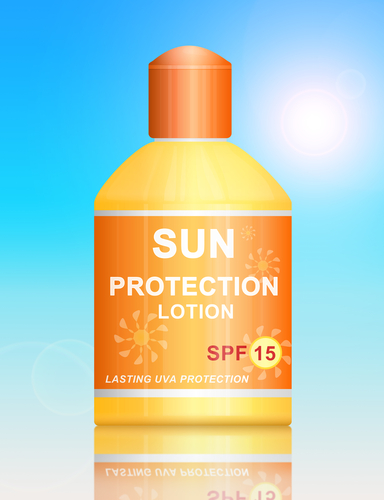
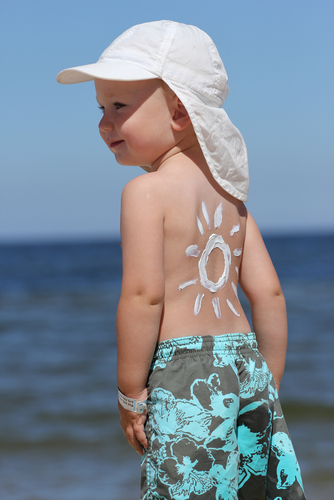 Cover. Dress kids in
protective clothing and hats.
Cover. Dress kids in
protective clothing and hats.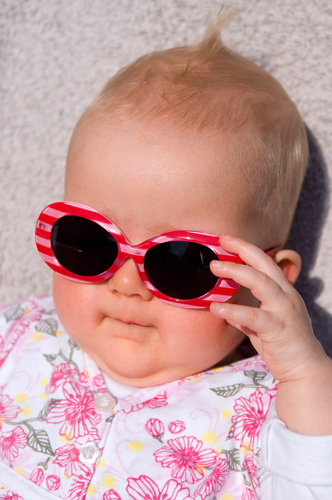 Keep infants out of the sun.
Keep infants out of the sun. 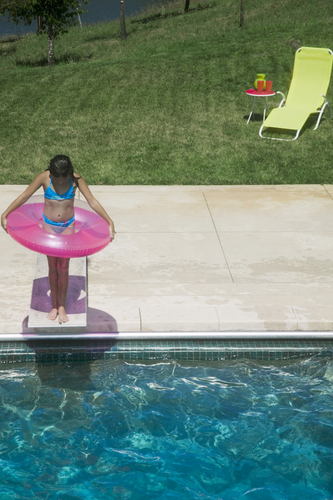
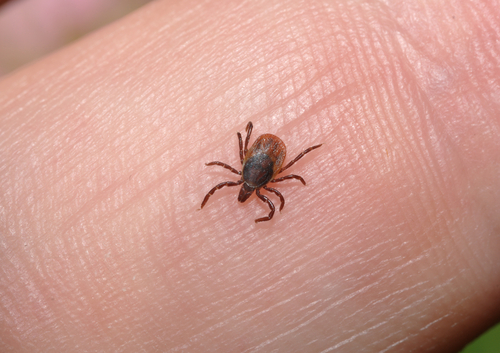
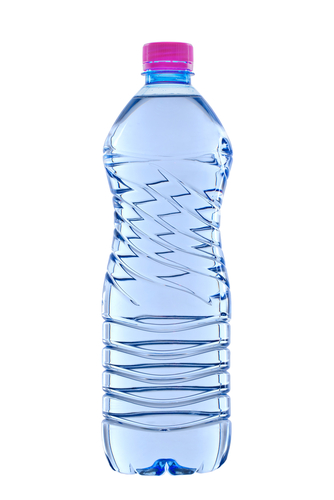 Prevent Dehydration.
Prevent Dehydration. 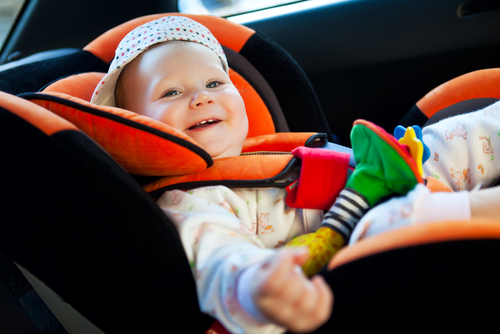 Never Wait in a Hot Car.
Never Wait in a Hot Car.